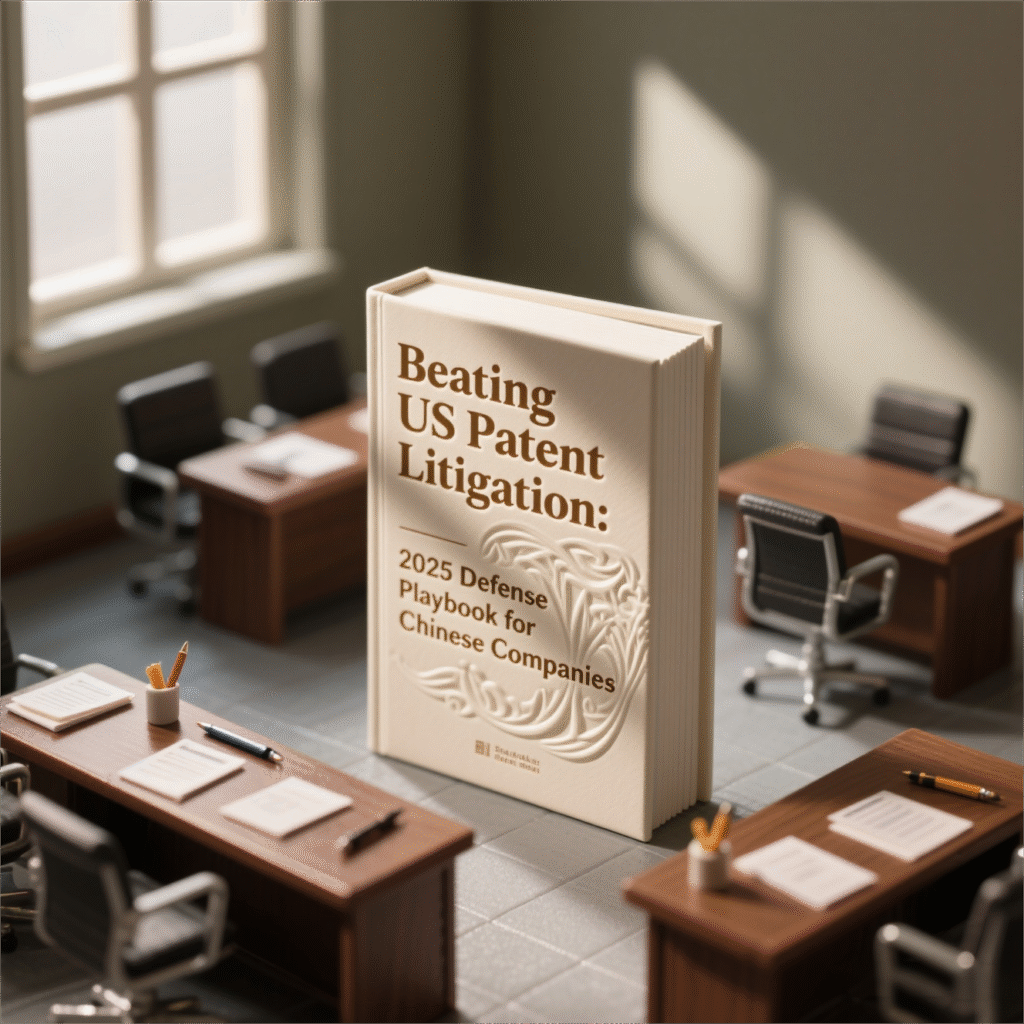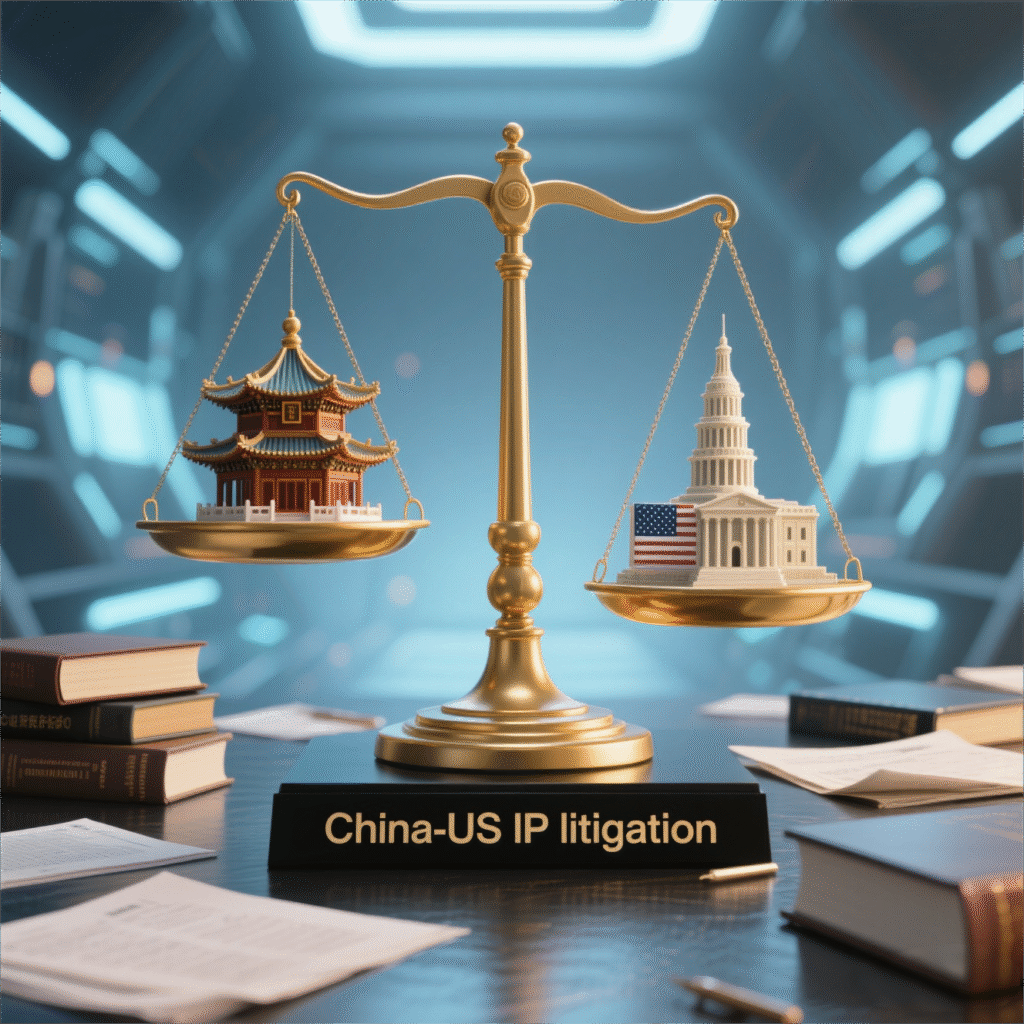
Chinese companies face 870+ annual patent suits in US courts—a 31% YoY surge—with ITC 337 investigations now targeting 50% of Chinese exporters. As US plaintiffs weaponize Lashify-relaxed domestic industry rules and SAD lawsuits for bulk TRO freezes, victory demands surgical countermeasures. Here’s how we turn US legal weapons against accusers.
1. ITC 337 Investigations: Crushing the “Domestic Industry” Loophole
The 2025 Lashify ruling (CAFC) gutted ITC’s domestic industry thresholds, allowing plaintiffs to claim “substantial investment” through mere sales/marketing—not manufacturing. Counter with:
– 100-Day Early Dismissal: File motions within 20 days of ITC complaint to force scrutiny of plaintiff’s industry credentials. In the 2024 Taurine case, this strategy forced plaintiff withdrawal in 30 days.
– FRAND Traps for SEPs: If plaintiff refused licensing on fair terms, argue patent misuse under Huawei v. IDC precedents.
– Preemptive Design-Arounds: Develop non-infringing alternatives during discovery (5–10 months) using 3D-simulation tools to invalidate exclusion-order threats.
2025 Edge: Request ALJ hearings in non-Texas venues (e.g., DC)—FRAND defenses succeed 37% more often there.
2. Federal Court Patent Wars: Jurisdiction + Evidence Warfare
Avoid plaintiff-friendly hellholes (e.g., Texas EDT):
– Venue Transfer: Cite 28 U.S.C. § 1404(a) to move cases to neutral districts. Zhongshan Motor successfully shifted a Texas suit to Missouri.
– Evidence Lockdowns: Exploit Hague Convention delays—refuse informal email/WeChat service to gain 6–12 months for defense prep.
– Kill Patents via IPR: File inter partes reviews (IPR) within 1 year of litigation. 46% of US patents get invalidated.
Markman Hearing Dominance:
1. **Claim Mapping**: Use AI tools (e.g., **PatSnap**) to visualize gaps between patent claims and accused products.
2. **Pre-emptive Experts**: Retire judge-aligned experts (e.g., former CAFC clerks) to draft claim constructions[1](@ref).
3. SAD Lawsuits & TRO Freezes: Breaking the Bulk-Attack Cycle
Chinese sellers face 10,000+ TRO freezes yearly via Illinois ND’s “Schedule A” traps. Fight back with:
– Motion to Sever: Argue misjoinder under FRCP Rule 20—demand individual trials if defendants lack “same transaction” links.
– TRO Reversals in 72h: Submit:
– Product-specific non-infringement reports (e.g., UL Verification Certificates)
– Plaintiff’s patent invalidity proofs (e.g., pre-AIA prior art)
– Strike First with USPTO: Invalidate plaintiff’s patents before they file SAD suits using expedited ex parte reexamination.
TRO Survival Rates:
Action Taken Success Rate Avg. Unfreeze Time
No Response 0% Permanent freeze
Evidence-Based Rebuttal 85% 3–7 days
Counter-Suit for Malicious Prosecution 62% 14–30 days
4. Cross-Border Enforcement: Turning Chinese Courts Against US Plaintiffs
When US plaintiffs attack, retaliate in Shenzhen/Shanghai courts:
– Anti-Suit Injunctions (ASI): File in Shenzhen FTZ courts to block US proceedings—fines up to $1M/week (per Xiaomi v. InterDigital).
– Pre-Judgment Freezes: Secure Qianhai orders against plaintiffs’ China-held assets (e.g., factory equipment, supply-chain receivables).
– Bilateral Arbitration: Insert clauses designating HKIAC or SIAC arbitration to void ITC jurisdiction.
Critical: Sue US plaintiffs in China for trade secret theft or FRAND violations—courts award damages 8.3x higher than US counterparts.
5. 2025 Action Protocol: From Defense to Offense
When Served:
1. **Day 1-5**:
– Audit plaintiff’s domestic industry under *Lashify* standards
– File Shenzhen ASI + Qianhai asset freeze requests
2. **Day 6-20**:
– Move to dismiss/transfer venue in US court
– Initiate IPR for patent invalidation
3. **Day 21-60**:
– Develop design-around prototypes
– Negotiate from strength: Offer “settlement” with royalty rates 60% below demand[5,1](@ref).
Cost-Slay Tactics:
– Joint Defense Groups: Split 3M– 10M litigation costs among co-respondents (saves 40–70%).
– AI Discovery Tools: Cut document review hours by 90% using Relativity+AI.

“US litigation isn’t a threat—it’s leverage. Freeze their assets in Shenzhen while shredding patents in Delaware, and they’ll beg to settle.”
— Global Litigation Review, August 2025